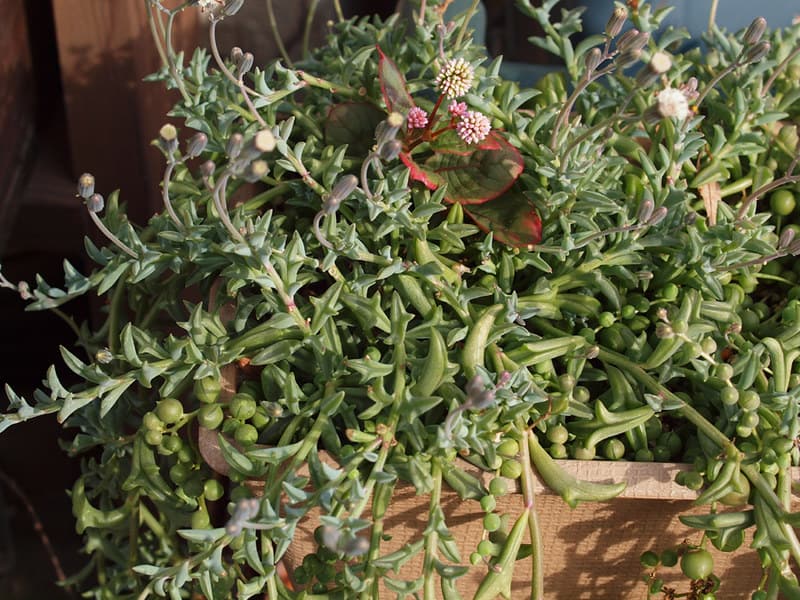The Senecio Peregrinus “String of Dolphins ” are amazing plants because they are really beautiful, unique and easy to care for plants since they are low maintenance.
The Senecio peregrinus or String of Dolphins is a succulent that, as the name implies, its leaves have the shape of a dolphin and it seems that the dolphin was jumping into the water.
Its leaves are small and bright green.
Senecio peregrinus “String of Dolphins” is reputed to be delicate, but it is a fun plant that will undoubtedly improve your collection.
Its stems are thin.
The plant blooms in the autumn season of white color and with a smell of cinnamon.
As the plant grows, it spreads over the ground and can be sown in a hanging pot.
You may like Senecio Vitalis
Tips to take care the Senecio peregrinus “String of Dolphins”
Substratum
If you sow your Senecio peregrinus in a pot, it is advisable to mix 50% black peat with 50% perlite or similar (pomice, akadama, previously washed river sand), since, this plant is very sensitive to excess watering.
And so in this way, you will make sure that the excess water comes out quickly, thus preventing the roots from rotting.
If you plant the Senecio peregrinus in the soil, you should know that it grows in soils with very good drainage.
If the substrate of your garden or patio is very compact, do not worry, you just have to make a planting hole of about 50cm x 50cm, then cover it with shading mesh and fill it with the mixture of substrates that I mentioned before and last, you just have to plant.
Irrigation
You can water the Senecio peregrinus 2 or 3 times a week during the warmest and driest season of the year, and every 10 or 15 days the rest of the year.
During the winter, and especially if frosts occur in your area, you should water the plant at least once or twice a month or every 35 days.
Do not spray the plant, because the water on its leaves or balls can clog the pores of the plant, preventing it from breathing.
During spring-summer, the plant to grow needs more water than when it is at rest, son in this case you can use it there is no risk.
Fertilizer
The importance of the water applies to the fertilizer the Senecio Peregrinus will have a good evelopment,if you add the fertilizer in spring and summer, with fertilizers for cacti and other succulents, following the indications specified on the product package.
If the plant is in a pot, add a liquid fertilizer so that the drainage is still good.
Propagation
Senecio peregrinus can be propagated by seeds and by cuttings in spring.
Seeds:
First Step: Fill a pot with black peat mixed with a picex in equal parts, and then add water to the substrate.
Second step: place the seeds on the surface of the substrate and then cover the seeds with a thin layer of pomice or river sand.
Third step: Finally, place the pot outside, in semi-shade.
Third step: water the seeds, but this time with a sprayer.
Recommendation: sprinkle copper or sulfur to avoid the appearance of fungi.
If all goes well, they will germinate in 2-3 weeks.
Cuttings
Multiplying it by cuttings is much simpler than propagation by seed. Just cut a piece of stem, then let the wound dry one or two days, and finally plant the cuttings in a pot with black peat mixed with pearlite in equal parts. It will emit its own roots in 1-2 weeks or so.
Temperature
Given its origin, Senecio Rowleyanus prefers temperate temperatures, ideally around 20 ° C.
It can withstand higher temperatures without problems but better not be below 3-6ºC.
Pruning
Cacti and succulents can be pruned to remove dead or damaged parts or to maintain a specific size or shape.
Pruning encourages new growth, branching and provides cuttings, which can be used to propagate more plants.
Growing fast it may be that Senecio rowleyanus needs to be pruned, and if so, you can prune it in late winter.
